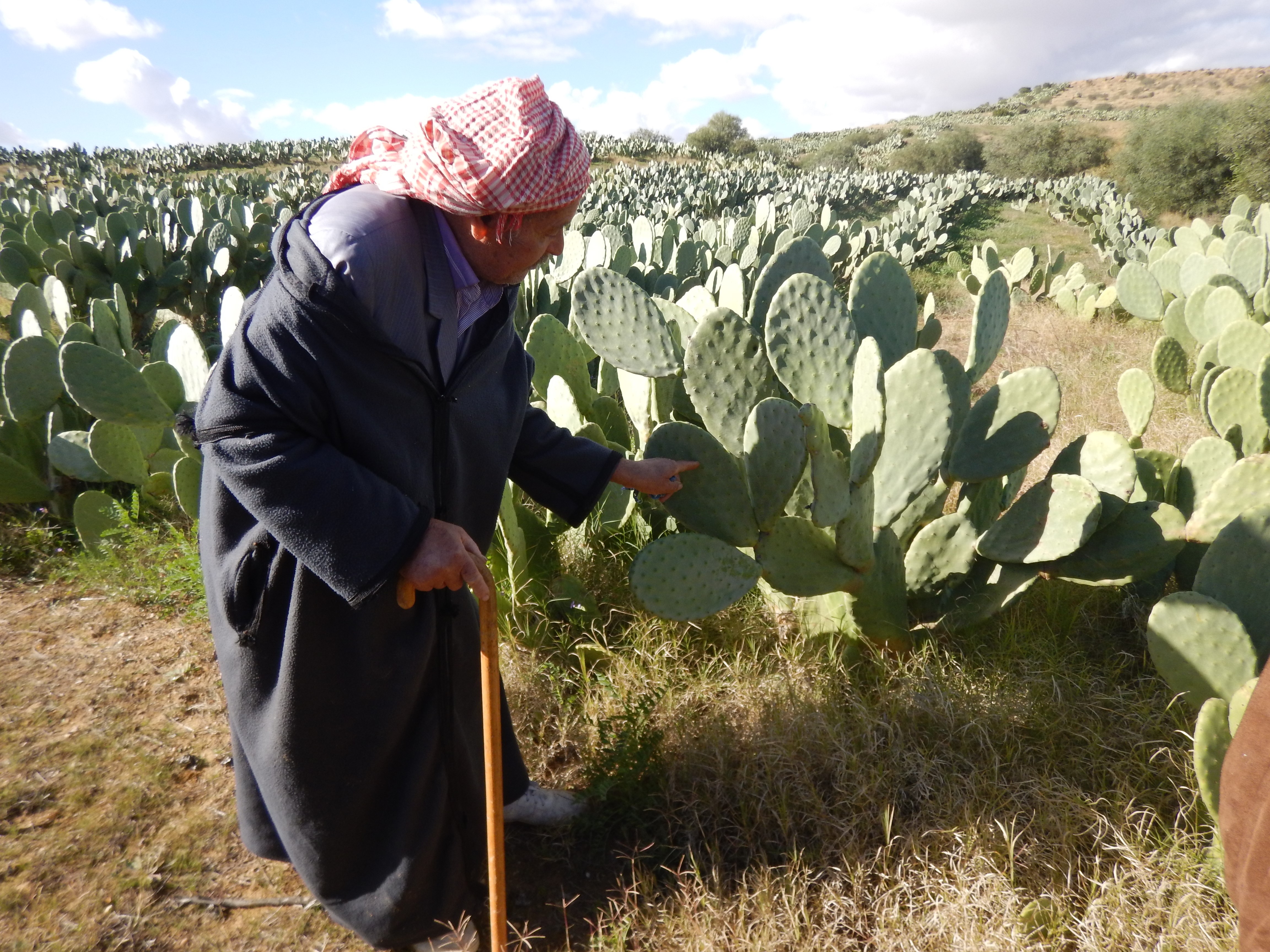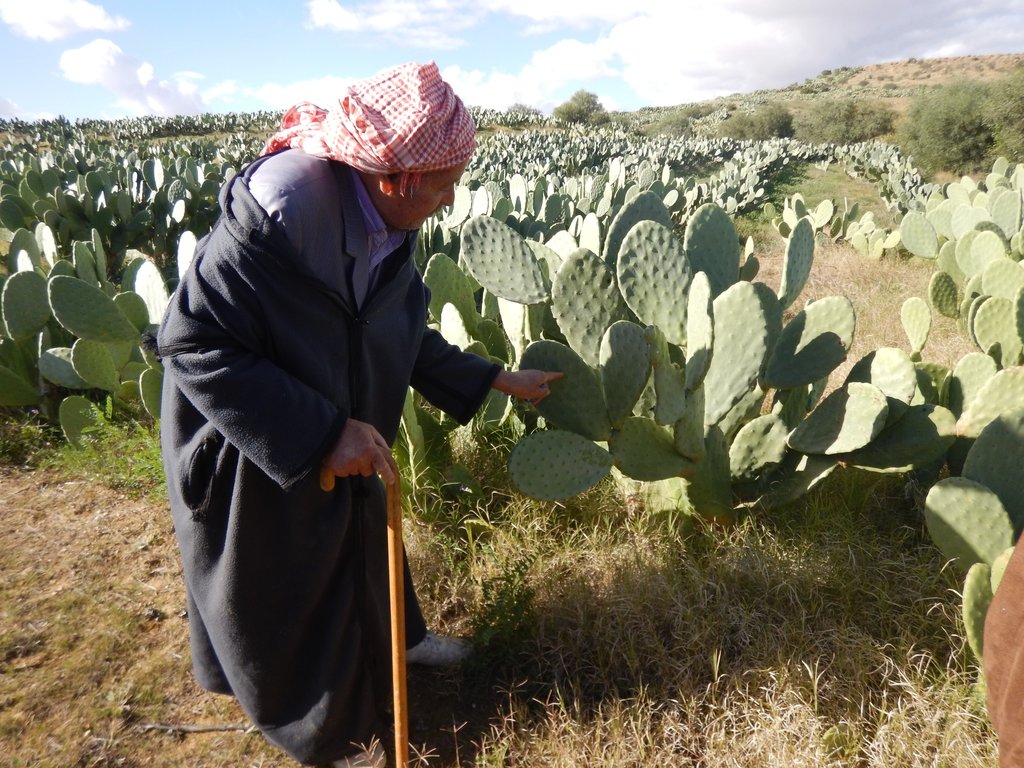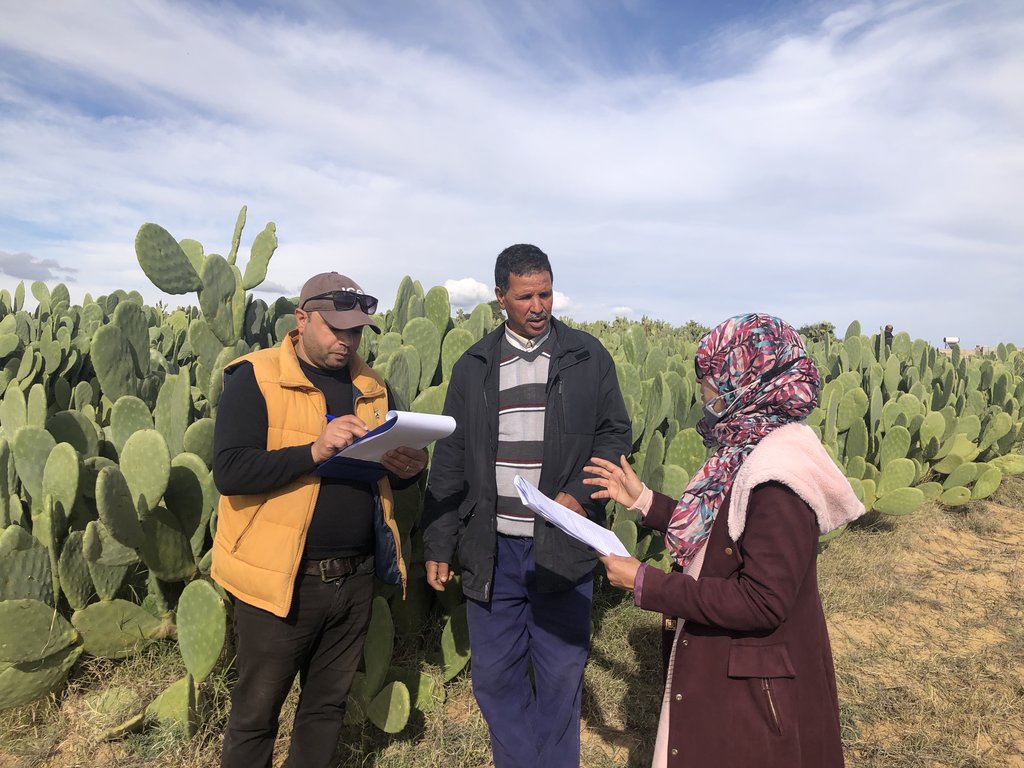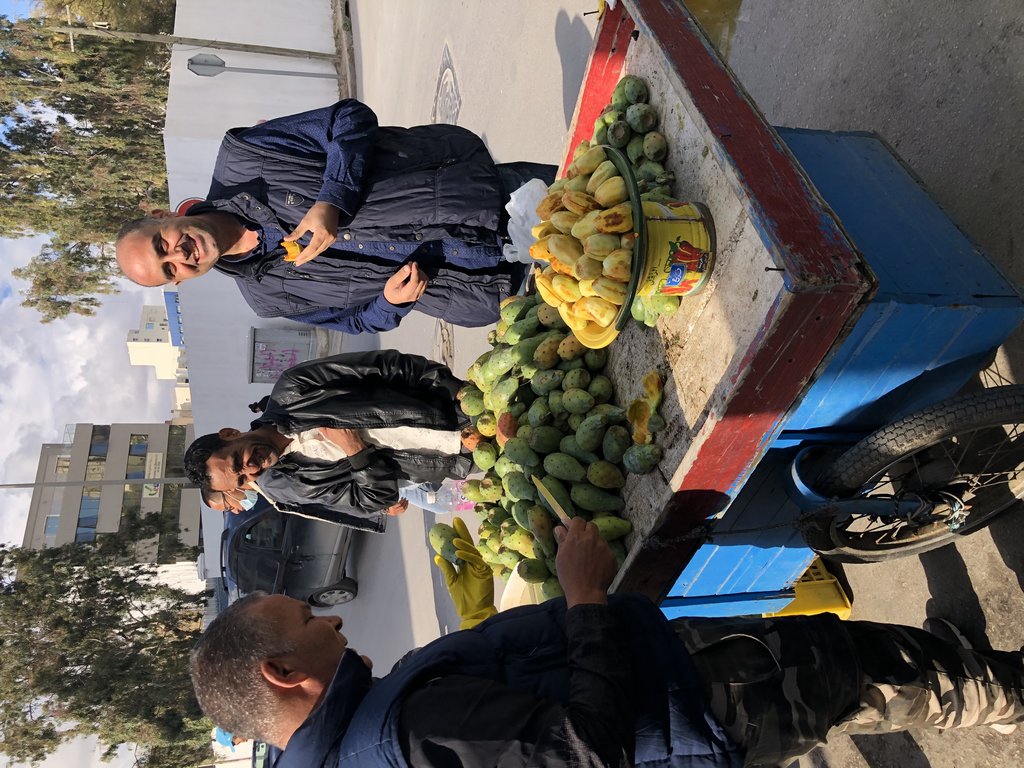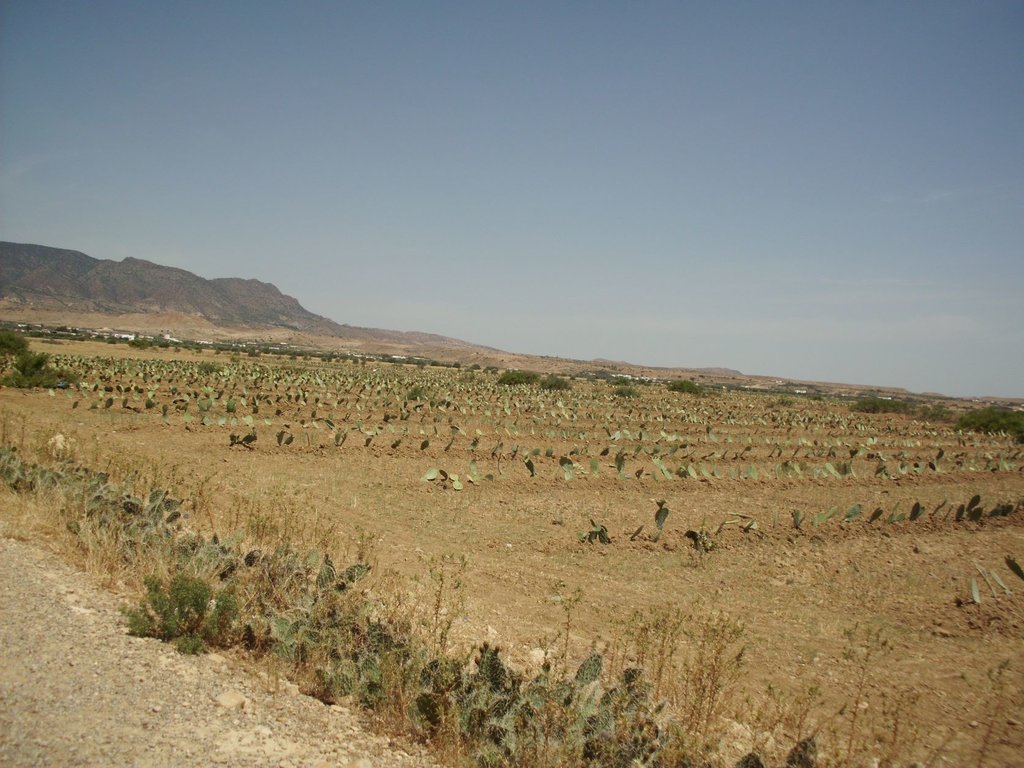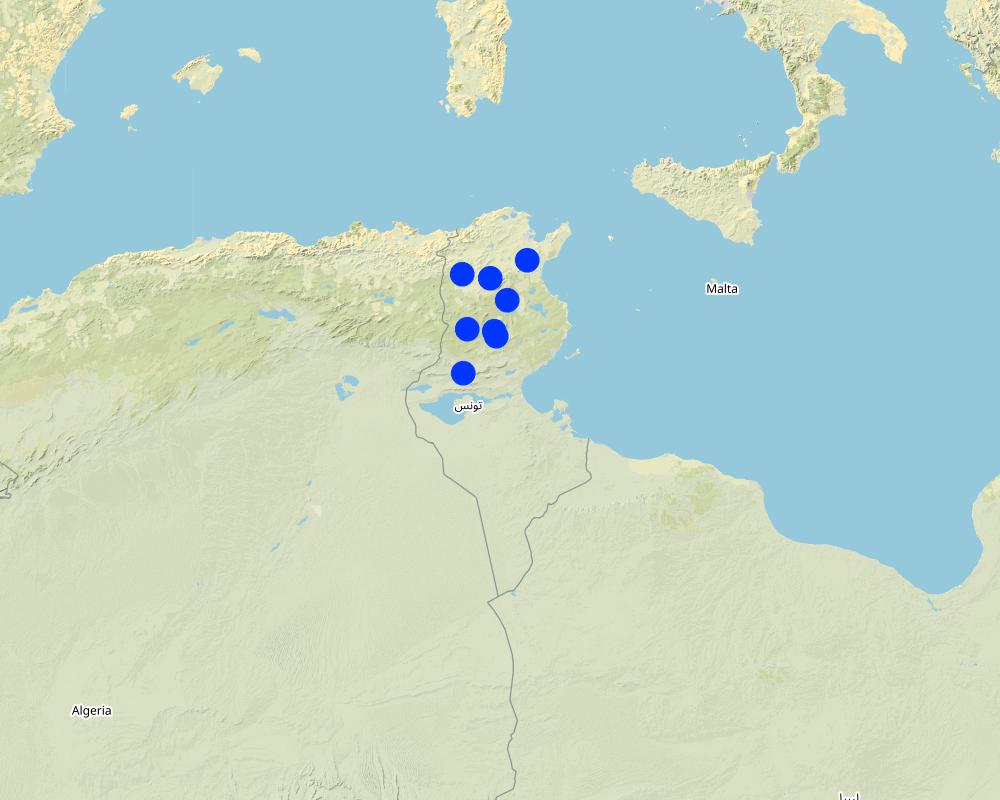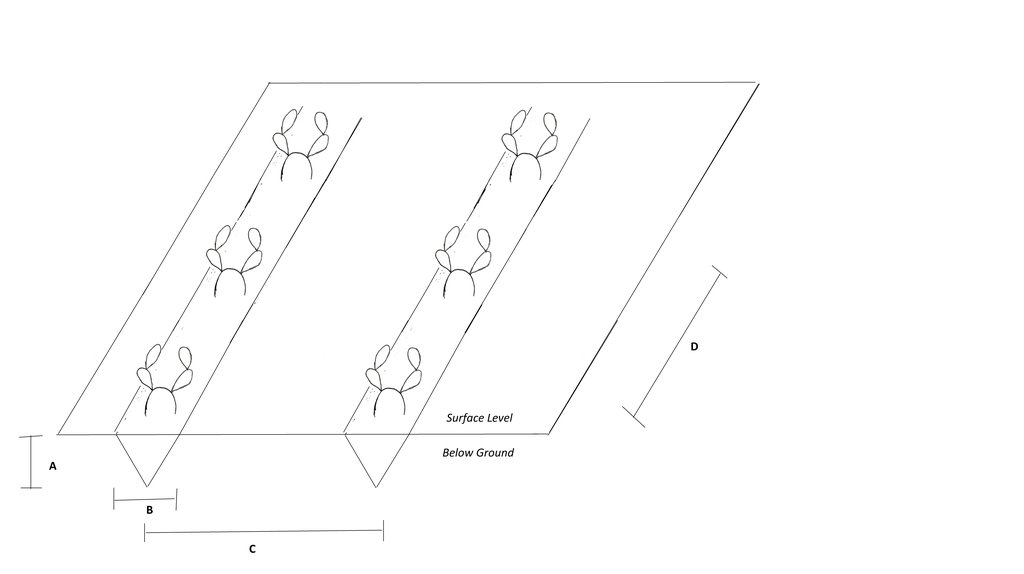Cactus Cultivation [突尼斯]
- 创建:
- 更新:
- 编制者: Joren Verbist
- 编辑者: –
- 审查者: William Critchley, Rima Mekdaschi Studer
technologies_5994 - 突尼斯
查看章节
全部展开 全部收起1. 一般信息
1.2 参与该技术评估和文件编制的资源人员和机构的联系方式
关键资源人
Research Team Leader of Rangeland Ecology and Forages:
Louhaichi Mounir
International Center of Agriculture Research in the Dry Areas (ICARDA)
突尼斯
Associate Professor:
Slim Slim
School of Higher Education in Agriculture of Mateur
突尼斯
有助于对技术进行记录/评估的项目名称(如相关)
ICARDA Institutional Knowledge Management Initiative有助于对技术进行记录/评估的机构名称(如相关)
International Center for Agricultural Research in the Dry Areas (ICARDA) - 黎巴嫩1.3 关于使用通过WOCAT记录的数据的条件
编制者和关键资源人员接受有关使用通过WOCAT记录数据的条件。:
是
1.4 所述技术的可持续性声明
这里所描述的技术在土地退化方面是否存在问题,导致无法被认为是一种可持续的土地管理技术?:
否
注释:
While Opuntia can be an invasive in North Africa, assurances have been given by ICARDA that this is a non-invasive species.
2. SLM技术的说明
2.1 技术简介
技术定义:
This technology is based on the natural advantages and the multi-purpose usage of spineless cactus pear (Opuntia fiscus-indica), to cultivate marginal lands in central Tunisia, generating environmental and socio-economic benefits.
2.2 技术的详细说明
说明:
The central areas of Tunisia are semi-arid and receive less than 500 millimeters of annual rainfall . Most of these lands are considered marginal as result of land degradation. Marginal lands are often used as (unproductive) grazing land for livestock. To revitalize these areas and to benefit the local population, the International Centre of Agricultural Research in Dry Areas (ICARDA) and its national partners have investigated the potential of cactus as a crop (e.g. Opuntia fiscus-indica).
Spineless cactus was already introduced in Tunisia during the sixteenth and seventeenth centuries, but beginning in 1920-1930 cultivation for fodder production has gradually evolved. Opuntia is known for its invasive character, but the particular species being promoted - Opuntia fiscus-indica - is non-invasive. The crop is well suited for the Tunisian context because the cacti can cope with high temperatures and grow well in (semi)-arid areas with limited rainfall. Additionally, the plant is very resilient as it can withstand a long dry season due to its high water- content and water-use -efficiency, which are a result of its morphology (waxy cuticle, no actual leaves) and its Crassulacean Acid Metabolism (CAM). In a CAM plant, stomata in the leaves remain shut during the day to reduce evapotranspiration, but open at night to collect and fix carbon dioxide (CO2). In general, cacti have multiple products that benefit local livelihoods. These are, for example, stable production of fodder for livestock and fruits for human consumption. Also, cactus can grow and produce requiring few inputs such as fertilizers, therefore marginal lands are well suited for cultivation. The main current risk for cactus cultivation is the risk of cochineal, an insect pest.
To establish a cactus plantation, the surface is ploughed to loosen up the often crusted soil. Then furrows are constructed in which the cacti pads are planted. Simultaneously, the furrows are partly filled with manure. The depth and widths of the furrows are 30 centimetres. The spacing between plants within the row is 50 centimeters and the distance between rows is 5 meters.
A cactus plantation needs weeding. Weeding is mechanically done by a plough in March to May. Harvesting of fruit is manually done by fruit-pickers in August to September. Cacti can also be harvested for their pads, which can be fed to livestock or used for outplanting. It is excellent fodder as it has a high nutritional value and high water-content. On average, a farmer following these agronomic practices generates an income of 800 USD per hectare.
To conclude, this documentation shows that the implementation of cacti is socio-economically and environmentally appropriate to cultivate marginal lands as cacti uses water and nutrients highly efficient while reducing land degradation. Therefore, the out-scaling of cacti is very valuable and a practical option to fight land degradation and enhance smallholder’s income.
2.3 技术照片
2.5 已应用该技术的、本评估所涵盖的国家/地区/地点
国家:
突尼斯
区域/州/省:
Central Tunisia
有关地点的进一步说明:
Kairouan, Zaghouan, Siliana, Kef, Sidi Bouzid, Kasserine and Gafsa
具体说明该技术的分布:
- 均匀地分布在一个区域
如果不知道精确的区域,请注明大致覆盖的区域:
- 1-10 平方千米
技术现场是否位于永久保护区?:
否
注释:
This documentation is a example of how cacti are cultivated in Tunisia, which is done on many (>100) farms.
The pin-points represent the provinces in which cactus are cultivated
Map
×2.6 实施日期
如果不知道确切的年份,请说明大概的日期:
- 10-50年前
2.7 技术介绍
详细说明该技术是如何引入的:
- 在实验/研究期间
- 通过项目/外部干预
3. SLM技术的分类
3.1 该技术的主要目的
- 改良生产
- 降低灾害风险
- 适应气候变化/极端天气及其影响
- 创造有益的经济影响
- 创造有益的社会影响
3.2 应用该技术的当前土地利用类型
同一土地单元内混合使用的土地::
否

农田
- 乔木与灌木的种植
乔木和灌木种植 - 指定作物:
- cactus, cactus-like (e.g. opuntia)
每年的生长季节数:
- 1
采用间作制度了吗?:
否
采用轮作制度了吗?:
否

牧场
集约放牧/饲料生产:
- 收割和携带/零放牧
动物类型:
- 山羊
- 绵羊
3.3 由于技术的实施,土地使用是否发生了变化?
由于技术的实施,土地使用是否发生了变化?:
- 是(请在技术实施前填写以下有关土地利用的问题)

牧场
粗放式放牧:
- 半游牧畜牧业
注释:
Before cactus cultivation, the land was marginal and only lightly used by pastoralists due to the very poor production.
3.4 供水
该技术所应用土地的供水:
- 雨养
3.5 该技术所属的SLM组
- 改良的地面/植被覆盖
- 改良植物品种/动物品种
3.6 包含该技术的可持续土地管理措施

农艺措施
- A1:植被和土壤覆盖层
- A3:土壤表面处理

管理措施
- M1:改变土地使用类型
3.7 该技术强调的主要土地退化类型

土壤水蚀
- Wt:表土流失/地表侵蚀
- Wg:冲沟侵蚀/沟蚀

土壤风蚀
- Et:表土流失

物理性土壤退化
- Pk:熟化和结壳

生物性退化
- Bc:植被覆盖的减少
3.8 防止、减少或恢复土地退化
具体数量名该技术与土地退化有关的目标:
- 防止土地退化
- 减少土地退化
4. 技术规范、实施活动、投入和成本
4.1 该技术的技术图纸
技术规范(与技术图纸相关):
A = Depth Furrow = 30 centimeter
B = Width Furrow = 30 centimeter
C = Spacing between rows = 5 meter
D = Spacing between plants = 0.5 meter
作者:
Joren Verbist
日期:
27/11/2021
4.2 有关投入和成本计算的一般信息
具体说明成本和投入是如何计算的:
- 每个技术区域
注明尺寸和面积单位:
1 Hectare
具体说明成本计算所用货币:
- 美元
4.3 技术建立活动
| 活动 | 时间(季度) | |
|---|---|---|
| 1. | Surface Soil Ploughing | Prior to Furrow Digging |
| 2. | Digging Furrows | Prior to Planting |
| 3. | Planting the Cacti | Spring to Autumn (During Planting) |
| 4. | Fertilizer Application | Spring to Autumn (During Planting) |
4.4 技术建立所需要的费用和投入
| 对投入进行具体说明 | 单位 | 数量 | 单位成本 | 每项投入的总成本 | 土地使用者承担的成本% | |
|---|---|---|---|---|---|---|
| 劳动力 | Planting & Fertilizer Application | Person-Hours | 91.5 | 0.875 | 80.06 | 100.0 |
| 设备 | Furrow Digging | Machine-Hours | 1.0 | 10.0 | 10.0 | 100.0 |
| 设备 | Surface Soil Ploughing | Machine-Hours | 2.0 | 10.0 | 20.0 | 100.0 |
| 植物材料 | Cactus Pads | Pads | 4000.0 | 0.045 | 180.0 | 100.0 |
| 肥料和杀菌剂 | Fertilizer | Ton | 1.0 | 110.0 | 110.0 | 100.0 |
| 技术建立所需总成本 | 400.06 | |||||
| 技术建立总成本,美元 | 400.06 | |||||
4.5 维护/经常性活动
| 活动 | 时间/频率 | |
|---|---|---|
| 1. | Mechanical Weeding | March-May |
| 2. | Harvesting | August-September |
4.6 维护/经常性活动所需要的费用和投入(每年)
| 对投入进行具体说明 | 单位 | 数量 | 单位成本 | 每项投入的总成本 | 土地使用者承担的成本% | |
|---|---|---|---|---|---|---|
| 劳动力 | Harvesting | Person-Hours | 40.0 | 0.875 | 35.0 | 100.0 |
| 设备 | Weeding | Machine-Hours | 1.0 | 10.0 | 10.0 | 100.0 |
| 技术维护所需总成本 | 45.0 | |||||
| 技术维护总成本,美元 | 45.0 | |||||
5. 自然和人文环境
5.1 气候
年降雨量
- < 250毫米
- 251-500毫米
- 501-750毫米
- 751-1,000毫米
- 1,001-1,500毫米
- 1,501-2,000毫米
- 2,001-3,000毫米
- 3,001-4,000毫米
- > 4,000毫米
农业气候带
- 半干旱
- 干旱
5.2 地形
平均坡度:
- 水平(0-2%)
- 缓降(3-5%)
- 平缓(6-10%)
- 滚坡(11-15%)
- 崎岖(16-30%)
- 陡峭(31-60%)
- 非常陡峭(>60%)
地形:
- 高原/平原
- 山脊
- 山坡
- 山地斜坡
- 麓坡
- 谷底
垂直分布带:
- 0-100 m a.s.l.
- 101-500 m a.s.l.
- 501-1,000 m a.s.l.
- 1,001-1,500 m a.s.l.
- 1,501-2,000 m a.s.l.
- 2,001-2,500 m a.s.l.
- 2,501-3,000 m a.s.l.
- 3,001-4,000 m a.s.l.
- > 4,000 m a.s.l.
说明该技术是否专门应用于:
- 不相关
5.3 土壤
平均土层深度:
- 非常浅(0-20厘米)
- 浅(21-50厘米)
- 中等深度(51-80厘米)
- 深(81-120厘米)
- 非常深(> 120厘米)
土壤质地(表土):
- 粗粒/轻(砂质)
土壤质地(地表以下> 20厘米):
- 粗粒/轻(砂质)
表土有机质:
- 中(1-3%)
- 低(<1%)
5.4 水资源可用性和质量
地下水位表:
5-50米
地表水的可用性:
匮乏/没有
水质(未处理):
仅供农业使用(灌溉)
水质请参考::
地下水
水的盐度有问题吗?:
是
该区域正在发生洪水吗?:
否
5.5 生物多样性
物种多样性:
- 低
栖息地多样性:
- 低
5.6 应用该技术的土地使用者的特征
定栖或游牧:
- 定栖的
生产系统的市场定位:
- 混合(生计/商业)
相对财富水平:
- 非常贫瘠
- 贫瘠
个人或集体:
- 个人/家庭
机械化水平:
- 手工作业
- 机械化/电动
性别:
- 女人
- 男人
土地使用者的年龄:
- 青年人
- 中年人
- 老年人
5.7 应用该技术的土地使用者使用的平均土地面积
- < 0.5 公顷
- 0.5-1 公顷
- 1-2 公顷
- 2-5公顷
- 5-15公顷
- 15-50公顷
- 50-100公顷
- 100-500公顷
- 500-1,000公顷
- 1,000-10,000公顷
- > 10,000公顷
这被认为是小规模、中规模还是大规模的(参照当地实际情况)?:
- 小规模的
5.8 土地所有权、土地使用权和水使用权
土地所有权:
- 个人,未命名
- 个人,有命名
土地使用权:
- 个人
用水权:
- 社区(有组织)
土地使用权是否基于传统的法律制度?:
是
5.9 进入服务和基础设施的通道
健康:
- 贫瘠
- 适度的
- 好
教育:
- 贫瘠
- 适度的
- 好
技术援助:
- 贫瘠
- 适度的
- 好
就业(例如非农):
- 贫瘠
- 适度的
- 好
市场:
- 贫瘠
- 适度的
- 好
能源:
- 贫瘠
- 适度的
- 好
道路和交通:
- 贫瘠
- 适度的
- 好
饮用水和卫生设施:
- 贫瘠
- 适度的
- 好
金融服务:
- 贫瘠
- 适度的
- 好
6. 影响和结论性说明
6.1 该技术的现场影响
社会经济效应
生产
作物生产
作物质量
饲料生产
饲料质量
生产故障风险
生产区域
社会文化影响
食品安全/自给自足
生态影响
土壤
土壤覆盖层
土壤流失
土壤堆积
土壤结壳/密封
土壤有机物/地下C
生物多样性:植被、动物
植被覆盖
减少气候和灾害风险
干旱影响
6.3 技术对渐变气候以及与气候相关的极端情况/灾害的暴露和敏感性(土地使用者认为的极端情况/灾害)
气候有关的极端情况(灾害)
气象灾害
| 该技术是如何应对的? | |
|---|---|
| 局地雹灾 | 不好 |
| 局地雪暴 | 不好 |
气候灾害
| 该技术是如何应对的? | |
|---|---|
| 热浪 | 非常好 |
| 干旱 | 非常好 |
生物灾害
| 该技术是如何应对的? | |
|---|---|
| 流行病 | 不好 |
6.4 成本效益分析
技术收益与技术建立成本相比如何(从土地使用者的角度看)?
短期回报:
轻度消极
长期回报:
积极
技术收益与技术维护成本/经常性成本相比如何(从土地使用者的角度看)?
短期回报:
非常积极
长期回报:
非常积极
6.5 技术采用
- > 50%
在所有采用这项技术的人当中,有多少人是自发的,即未获得任何物质奖励/付款?:
- 51-90%
6.6 适应
最近是否对该技术进行了修改以适应不断变化的条件?:
否
6.7 该技术的优点/长处/机会
| 土地使用者眼中的长处/优势/机会 |
|---|
| The cacti are highly productive with minimum inputs. |
| It does not require much water |
| The cacti are even productive in poor soil and by growing cacti on these soils, it also reduces erosion. |
| The reduced risk of drought deteriorated yields is important as climate change leads to more extreme weather event, such as droughts. This will only increase in the future. Therefore the cactus's ability to cope with climate change (resilience to climate fluctuations) is a great advantage and increasingly important. |
| 编制者或其他关键资源人员认为的长处/优势/机会 |
|---|
| Due to the suitability of cacti on marginal lands, the soil is partly covered permanently by vegetation in these areas which protects these degraded lands. Therefore, cacti cultivation could offer incentive to prevent land degradation. |
| The technology offers increased resilience of the environment and its involved livelihoods. This is because cacti are more resilient to climate change induced effects such as increased droughts and increasing (summer) temperatures, as result of their high-water content and efficiency. Therefore, this technology is better suited for the future. |
6.8 技术的弱点/缺点/风险及其克服方法
| 土地使用者认为的弱点/缺点/风险 | 如何克服它们? |
|---|---|
| The significant cost related to labour. | |
| The increased risk of new pests. | More awareness is required so the new pests can be identified, allowing proper and timely action. |
| 编制者或其他关键资源人员认为的弱点/缺点/风险 | 如何克服它们? |
|---|---|
| The possible knowledge gap for farmers to switch from their conventional/traditional agricultural practices to a more innovative one could be a bottleneck for out-scaling the technology. | This bottleneck can be overcome, by developing social capital such as (e.g.) institutions or farmers networks to disseminate knowledge. A good example is the field days for farmers organized ICARDA. |
| The risks of pests and diseases is a weakness of the cacti as these plants are vulnerable to this. Also, due to the density and mono-cropping of the cacti, the pest/ disease may spread easily and rapidly over the field. Eventually, risking the production of the cacti, thus possibly reducing the income of local farmers. | A solution may be found in changing the agricultural activities. An example of such a possible solution is the introduction of intercropping, this could increase bio-diversity and reduce the potential loss of income in case of a pest-outbreak. |
7. 参考和链接
7.1 信息的方法/来源
- 与SLM专业人员/专家的访谈
- 根据报告和其他现有文档进行编译
(现场)数据是什么时候汇编的?:
2021
7.2 参考可用出版物
标题、作者、年份、ISBN:
Mounir Louhaichi, Sawsan Hassan, Joren Verbist, Rima Mekdaschi-Studer. (13/4/2021). Cactus Fruit Plantation in Arid Dry Lands (Jordan). Global: WOCAT.
可以从哪里获得?成本如何?
https://hdl.handle.net/20.500.11766/13197 / https://qcat.wocat.net/en/wocat/technologies/view/technologies_5847/
标题、作者、年份、ISBN:
Mounir Louhaichi, et al.,. 2021. Multi-purpose drought-tolerant cactus pear can provide livelihood opportunities for farmers and nutrition for people and livestock in dryland areas. Policy Brief. Nairobi, Kenya ILRI
可以从哪里获得?成本如何?
https://hdl.handle.net/10568/114695
标题、作者、年份、ISBN:
Mounir Louhaichi, Sawsan Hassan, Giorgia Liguori. (30/12/2019). Manual: Cactus Pear Agronomic Practices.
可以从哪里获得?成本如何?
https://hdl.handle.net/20.500.11766/10558
标题、作者、年份、ISBN:
HO de Waal, Mounir Louhaichi, Makiko Taguchi, Herman Fouché, Maryna de Wit. (25/1/2015). Development of a cactus pear agro-industry for the sub-Sahara Africa Region. Bloemfontein, South Africa: HO de Waal (Curator).
可以从哪里获得?成本如何?
https://hdl.handle.net/20.500.11766/7109
标题、作者、年份、ISBN:
Mounir Louhaichi, Sawsan Hassan. (7/10/2018). Managing rangelands: promoting sustainable shrub species: Opuntia ficus-indica (L. ) Mill: a sustainable fodder plant for the dry areas. Beirut, Lebanon: International Center for Agricultural Research in the Dry Areas (ICARDA).
可以从哪里获得?成本如何?
https://hdl.handle.net/20.500.11766/9048
标题、作者、年份、ISBN:
Mourad Rekik, Mounir Louhaichi. (9/3/2014). Cactusnet: Promoting the social and ecological benefits of cactus production: Enhancing sheep reproduction through cactus-based feed diets. Beirut, Lebanon: International Center for Agricultural Research in the Dry Areas (ICARDA).
可以从哪里获得?成本如何?
https://hdl.handle.net/20.500.11766/8523
标题、作者、年份、ISBN:
Hichem Ben Salem, Mounir Louhaichi. (30/11/2014). Cactusnet: Promoting the social and ecological benefits of cactus production: Promoting Cactus as an alternative and sustainable livestock feed. Beirut, Lebanon: International Center for Agricultural Research in the Dry Areas (ICARDA)
可以从哪里获得?成本如何?
https://hdl.handle.net/20.500.11766/5454
标题、作者、年份、ISBN:
Ali Nefzaoui, Mounir Louhaichi, Hichem Ben Salem. (30/1/2014). Cactus as a Tool to Mitigate Drought and to Combat Desertification. Journal of Arid Land Studies, 24(1), pp. 121-124.
可以从哪里获得?成本如何?
https://hdl.handle.net/20.500.11766/7319
标题、作者、年份、ISBN:
Mounir Louhaichi (Producer), Sawsan Hassan (Director). (17/1/2021). Best Agronomic Practices for establishing cactus Orchard. Jordan: International Center for Agricultural Research in the Dry Areas (ICARDA) (Executive Producer).
可以从哪里获得?成本如何?
https://hdl.handle.net/20.500.11766/12374
标题、作者、年份、ISBN:
Fethi Gouhis, Mounir Louhaichi, Ali Nefzaoui. (12/8/2019). Cactus (Opuntia ficus-indica) utilization for rehabilitating rangelands in arid regions of Tunisia. Acta Horticulturae, 1247, pp. 95-102.
可以从哪里获得?成本如何?
https://hdl.handle.net/20.500.11766/10394
链接和模块
全部展开 全部收起链接
无链接
模块
无模块


